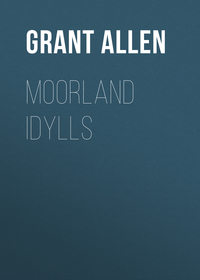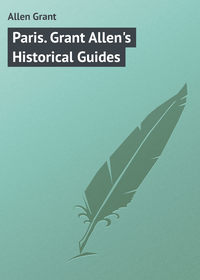 полная версия
полная версияFalling in Love; With Other Essays on More Exact Branches of Science
Even the larger beasts that haunt the desert take their tone not a little from their sandy surroundings. You have only to compare the desert-haunting lion with the other great cats to see at once the reason for his peculiar uniform. The tigers and other tropical jungle-cats have their coats arranged in vertical stripes of black and yellow, which, though you would hardly believe it unless you saw them in their native nullahs (good word 'nullah,' gives a convincing Indian tone to a narrative of adventure), harmonise marvellously with the lights and shades of the bamboos and cane-brakes through whose depths the tiger moves so noiselessly.
Looking into the gloom of a tangled jungle, it is almost impossible to pick out the beast from the yellow stems and dark shadows in which it hides, save by the baleful gleam of those wicked eyes, catching the light for one second as they turn wistfully and bloodthirstily towards the approaching stranger. The jaguar, oncelot, leopard, and other tree-cats, on the other hand, are dappled or spotted—a type of coloration which exactly harmonises with the light and shade of the round sun-spots seen through the foliage of a tropical forest. They, too, are almost indistinguishable from the trees overhead as they creep along cautiously on the trunks and branches. But spots or stripes would at once betray the crouching lion among the bare rocks or desert sands; and therefore the lion is approximately sand-coloured. Seen in a cage at the Zoo, the British lion is a very conspicuous animal indeed; but spread at full length on a sandy patch or among bare yellow rocks under the Saharan sun, you may walk into his mouth before you are even aware of his august existence.
The three other great desert beasts of Asia or Africa—the ostrich, the giraffe, and the camel—are less protectively coloured, for various reasons. Giraffes and ostriches go in herds; they trust for safety mainly to their swiftness of foot, and, when driven to bay, like most gregarious animals, they make common cause against the ill-advised intruder. In such cases it is often well, for the sake of stragglers, that the herd should be readily distinguished at a distance; and it is to insure this advantage, I believe, that giraffes have acquired their strongly marked spots, as zebras have acquired their distinctive stripes, and hyænas their similarly banded or dappled coats. One must always remember that disguise may be carried a trifle too far, and that recognisability in the parents often gives the young and giddy a point in their favour. For example, it seems certain that the general grey-brown tint of European rabbits serves to render them indistinguishable in a field of bracken, stubble, or dry grass. How hard it is, either for man or hawk, to pick out rabbits so long as they sit still, in an English meadow! But as soon as they begin to run towards their burrows the white patch by their tails inevitably betrays them; and this betrayal seems at first sight like a failure of adaptation. Certainly many a rabbit must be spotted and shot, or killed by birds of prey, solely on account of that tell-tale white patch as he makes for his shelter. Nevertheless, when we come to look closer, we can see, as Mr. Wallace acutely suggests, that the tell-tale patch has its function also. On the first alarm the parent rabbits take to their heels at once, and run at any untoward sight or sound toward the safety of the burrow. The white patch and the hoisted tail act as a danger-signal to the little bunnies, and direct them which way to escape the threatened misfortune. The young ones take the hint at once and follow their leader. Thus what may be sometimes a disadvantage to the individual animal becomes in the long run of incalculable benefit to the entire community.
It is interesting to note, too, how much alike in build and gait are these three thoroughbred desert roamers, the giraffe, the ostrich, and the camel or dromedary. In their long legs, their stalking march, their tall necks, and their ungainly appearance they all betoken their common adaptation to the needs and demands of a special environment. Since food is scarce and shelter rare, they have to run about much over large spaces in search of a livelihood or to escape their enemies. Then the burning nature of the sand as well as the need for speed compels them to have long legs which in turn necessitate equally long necks, if they are to reach the ground or the trees overhead for food and drink. Their feet have to be soft and padded to enable them to run over the sand with ease; and hard horny patches must protect their knees and all other portions of the body liable to touch the sweltering surface when they lie down to rest themselves. Finally, they can all endure thirst for long periods together; and the camel, the most inveterate desert-haunter of the trio, is even provided with a special stomach to take in water for several days at a stretch, besides having a peculiarly tough skin in which perspiration is reduced to a minimum. He carries his own water-supply internally, and wastes as little of it by the way as possible.
What the camel is among animals that is the cactus among plants—the most confirmed and specialised of desert-haunting organisms. It has been wholly developed in, by, and for the desert. I don't mean merely to say that cactuses resemble camels because they are clumsy, ungainly, awkward, and paradoxical; that would be a point of view almost as far beneath the dignity of science (which in spite of occasional lapses into the sin of levity I endeavour as a rule piously to uphold) as the old and fallacious reason 'because there's a B in both.' But cactuses, like camels, take in their water supply whenever they can get it, and never waste any of it on the way by needless evaporation. As they form the perfect central type of desert vegetation, and are also familiar plants to everyone, they may be taken as a good illustrative example of the effect that desert conditions inevitably produce upon vegetable evolution.
Quaint, shapeless, succulent, jointed, the cactuses look at first sight as if they were all leaves, and had no stem or trunk worth mentioning. Of course, therefore, the exact opposite is really the case; for, as a late lamented poet has assured us in mournful numbers, things (generally speaking) are not what they seem. The true truth about the cactuses runs just the other way; they are all stem and no leaves; what look like leaves being really joints of the trunk or branches, and the foliage being all dwarfed and stunted into the prickly hairs that dot and encumber the surface. All plants of very arid soils—for example, our common English stonecrops—tend to be thick, jointed, and succulent; the distinction between stem and leaves tends to disappear; and the whole weed, accustomed at times to long drought, acquires the habit of drinking in water greedily at its rootlets after every rain, and storing it away for future use in its thick, sponge-like, and water-tight tissues. To prevent undue evaporation, the surface also is covered with a thick, shiny skin—a sort of vegetable macintosh, which effectually checks all unnecessary transpiration. Of this desert type, then, the cactus is the furthest possible term. It has no flat leaves with expanded blades, to wither and die in the scorching desert air; but in their stead the thick and jointed stems do the same work—absorb carbon from the carbonic acid of the air, and store up water in the driest of seasons. Then, to repel the attacks of herbivores, who would gladly get at the juicy morsel if they could, the foliage has been turned into sharp defensive spines and prickles. The cactus is tenacious of life to a wonderful degree; and for reproduction it trusts not merely to its brilliant flowers, fertilised for the most part by desert moths or butterflies, and to its juicy fruit, of which the common prickly pear is a familiar instance, but it has the special property of springing afresh from any stray bit or fragment of the stem that happens to fall upon the dry ground anywhere.
True cactuses (in the native state) are confined to America; but the unhappy naturalist who ventures to say so in mixed society is sure to get sat upon (without due cause) by numberless people who have seen 'the cactus' wild all the world over. For one thing, the prickly pear and a few other common American species, have been naturalised and run wild throughout North Africa, the Mediterranean shores, and a great part of India, Arabia, and Persia. But what is more interesting and more confusing still, other desert plants which are not cactuses, living in South Africa, Sind, Rajputana, and elsewhere unspecified, have been driven by the nature of their circumstances and the dryness of the soil to adopt precisely the same tactics, and therefore unconsciously to mimic or imitate the cactus tribe in the minutest details of their personal appearance. Most of these fallacious pseudo-cactuses are really spurges or euphorbias by family. They resemble the true Mexican type in externals only; that is to say, their stems are thick, jointed, and leaf-like, and they grow with clumsy and awkward angularity; but in the flower, fruit, seed, and in short in all structural peculiarities whatsoever, they differ utterly from the genuine cactus, and closely resemble all their spurge relations. Adaptive likenesses of this sort, due to mere stress of local conditions, have no more weight as indications of real relationship than the wings of the bat or the nippers of the seal, which don't make the one into a skylark, or the other into a mackerel.
In Sahara, on the other hand, the prevailing type of vegetation (wherever there is any) belongs to the kind playfully described by Sir Lambert Playfair as 'salsolaceous,' that is to say, in plainer English, it consists of plants like the glass-wort and the kali-weed, which are commonly burnt to make soda. These fleshy weeds resemble the cactuses in being succulent and thick-skinned but they differ from them in their curious ability to live upon very salt and soda-laden water. All through the great African desert region, in fact, most of the water is more or less brackish; 'bitter lakes' are common, and gypsum often covers the ground over immense areas. These districts occupy the beds of vast ancient lakes, now almost dry, of which the existing chotts, or very salt pools, are the last shrunken and evanescent relics.
And this point about the water brings me at last to a cardinal fact in the constitution of deserts which is almost always utterly misconceived in Europe. Most people at home picture the desert to themselves as wholly dead, flat, and sandy. To talk about the fauna and flora of Sahara sounds in their ears like self-contradictory nonsense. But, as a matter of fact, that uniform and lifeless desert of the popular fancy exists only in those sister arts that George II.—good, practical man—so heartily despised, 'boetry and bainting.' The desert of real life, though less impressive, is far more varied. It has its ups and downs, its hills and valleys. It has its sandy plains and its rocky ridges. It has its lakes and ponds, and even its rivers. It has its plants and animals, its oases and palm-groves. In short, like everything else on earth, it's a good deal more complex than people imagine.
One may take Sahara as a very good example of the actual desert of physical geography, in contradistinction to the level and lifeless desert that stretches like the sea over illimitable spaces in verse or canvas. And here, I fear, I am going to dispel another common and cherished illusion. It is my fate to be an iconoclast, and perhaps long practice has made me rather like the trade than otherwise. A popular belief exists all over Europe that the late M. Roudaire—that De Lesseps who never quite 'came off'—proposed to cut a canal from the Mediterranean into the heart of Africa, which was intended, in the stereotyped phrase of journalism, to 'flood Sahara,' and convert the desert into an inland sea. He might almost as well have talked of cutting a canal from Brighton to the Devil's Dyke and 'submerging England,' as the devil wished to do in the old legend. As a matter of fact, good, practical M. Roudaire, sound engineer that he was, never even dreamt of anything so chimerical. What he did really propose was something far milder and simpler in its way, but, as his scheme has given rise to the absurd notion that Sahara as a whole lies below sea-level, it may be worth while briefly to explain what it was he really thought of doing.
Some sixty miles south of Biskra, the most fashionable resort in the Algerian Sahara, there is a deep depression two hundred and fifty miles long, partly occupied by three salt lakes of the kind so common over the whole dried-up Saharan area. These three lakes, shrunken remnants of much larger sheets, lie below the level of the Mediterranean, but they are separated from it, and from one another, by upland ranges which rise considerably above the sea line. What M. Roudaire proposed to do was to cut canals through these three barriers, and flood the basins of the salt lakes. The result would have been, not as is commonly said to submerge Sahara, nor even to form anything worth seriously describing as 'an inland sea,' but to substitute three larger salt lakes for the existing three smaller ones. The area so flooded, however, would bear to the whole area of Sahara something like the same proportion that Windsor Park bears to the entire surface of England. This is the true truth about that stupendous undertaking, which is to create a new Mediterranean in the midst of the Dark Continent, and to modify the climate of Northern Europe to something like the condition of the Glacial Epoch. A new Dead Sea would be much nearer the mark, and the only way Northern Europe would feel the change, if it felt it at all, would be in a slight fall in the price of dates in the wholesale market.
No, Sahara as a whole is not below sea-level; it is not the dry bed of a recent ocean; and it is not as flat as the proverbial pancake all over. Part of it, indeed, is very mountainous, and all of it is more or less varied in level. The Upper Sahara consists of a rocky plateau, rising at times into considerable peaks; the Lower, to which it descends by a steep slope, is 'a vast depression of clay and sand,' but still for the most part standing high above sea-level. No portion of the Upper Sahara is less than 1,300 feet high—a good deal higher than Dartmoor or Derbyshire. Most of the Lower reaches from two to three hundred feet—quite as elevated as Essex or Leicester. The few spots below sea-level consist of the beds of ancient lakes, now much shrunk by evaporation, owing to the present rainless condition of the country; the soil around these is deep in gypsum, and the water itself is considerably salter than the sea. That, however, is always the case with freshwater lakes in their last dotage, as American geologists have amply proved in the case of the Great Salt Lake of Utah. Moving sand undoubtedly covers a large space in both divisions of the desert, but according to Sir Lambert Playfair, our best modern authority on the subject, it occupies not more than one-third part of the entire Algerian Sahara. Elsewhere rock, clay, and muddy lake are the prevailing features, interspersed with not infrequent date-groves and villages, the product of artesian wells, or excavated spaces, or river oases. Even Sahara, in short, to give it its due, is not by any means so black as it's painted.









